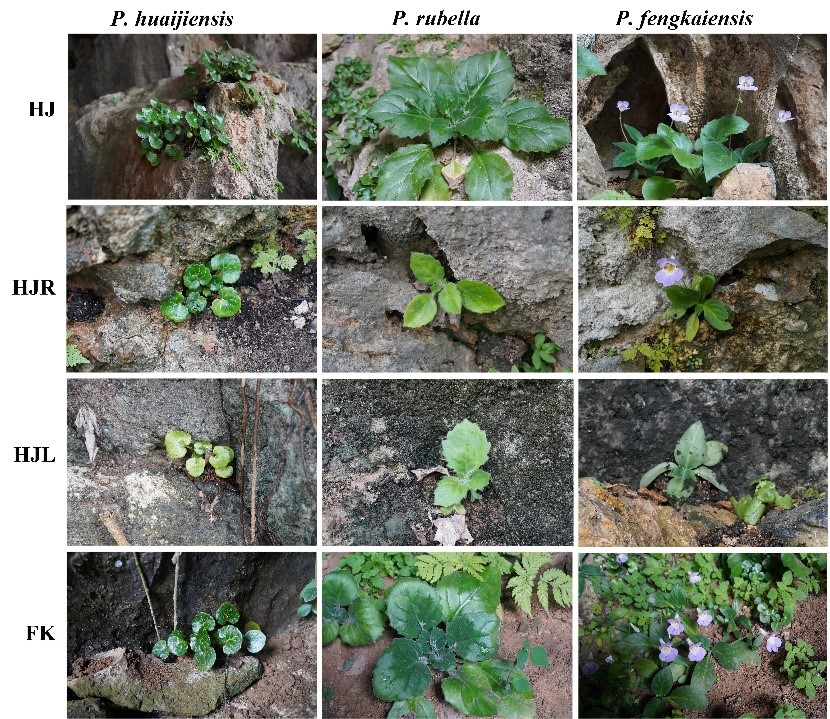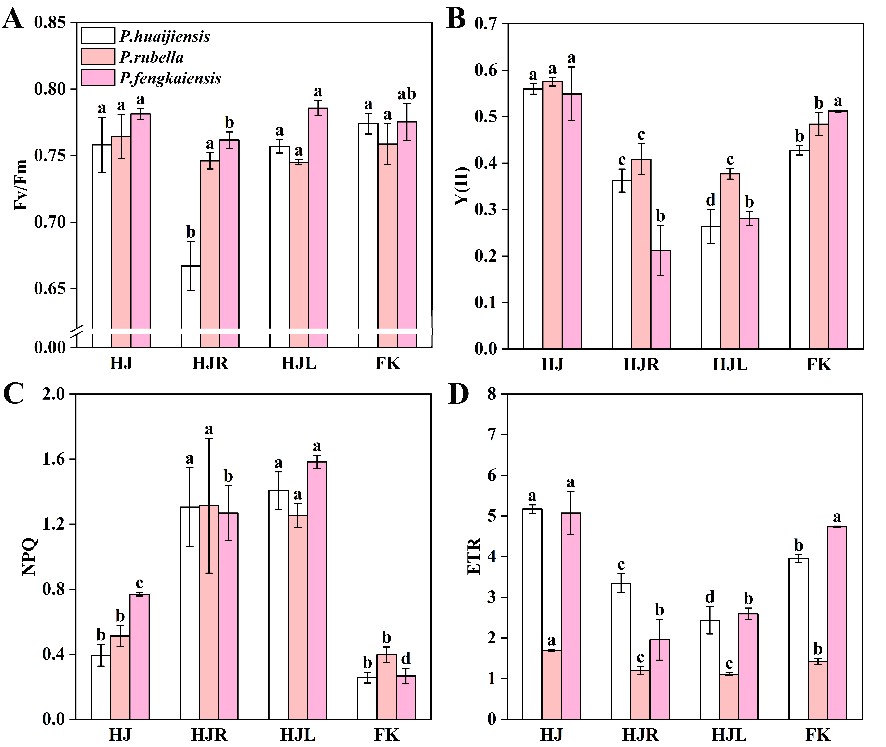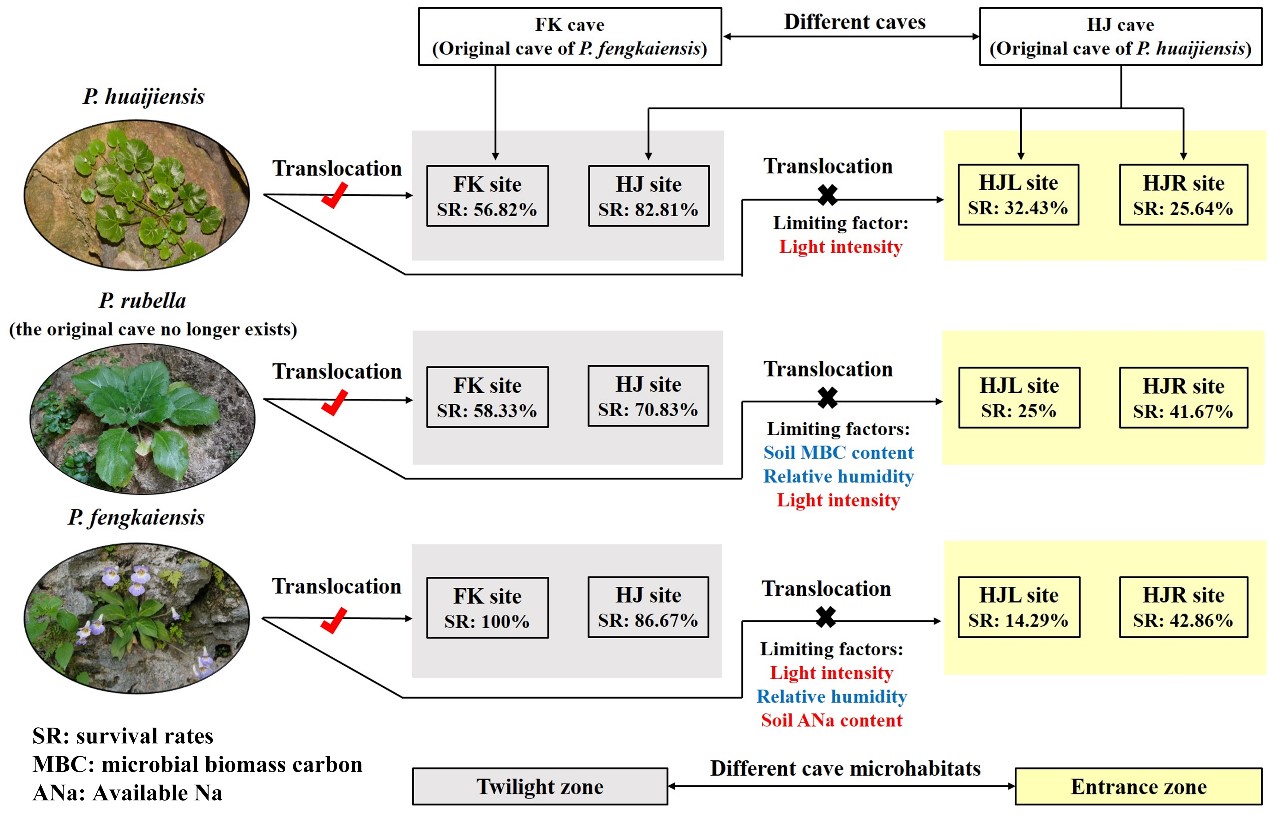Successful reintroduction of Primulina species
Karst caves are hotspots of biodiversity and endemism, but threatened by human unsustainable activities. Many cave plants are site-endemic restricted in isolated caves and are at risk of extinction due to habitat loss. Therefore, it is urgent to protect these endemic cave plants in situ and find other alternative habitats for conservation translocation.
Primulina Hance is the most representative taxa in karst areas. However, most species are site-endemic found only in single and isolated karst caves due to the terrestrial-island nature of karst landforms. The degradation of cave habitats can easily lead to the extinction of related species. P. huaijiensis, P. rubella and P. fengkaiensis are typical endangered species in karst caves, which are assessed as critically endangered (CR), extinct in the wild (EW) and vulnerable (VU) respectively according to the number of individuals in the wild. To explore the adaptability of cave plants to different karst cave habitats and confirm whether there are alternative habitats for conservation translocation, recoprocal transplant experiments were conducted. Comparative analysis of the environmental variables at four translocation sites, as well as survival rates, phenotypic, photosynthetic and biochemical traits of these species showed thatthe three species can adapt to twilight zone of alternative caves under similar climatic conditions, but transplanting them outside caves was not conducive to their growth. Light intensity, relative humidity and soil nutrients were the limiting factors affecting their growth and survival. This study showed that on the basis of in-situ conservation, alternative caves with similar climatic conditions could be selected as reintroduction sites to construct natural germplasm resource pools.
The research entitled ‘Experimental translocation of Primulina species provides insights into the conservation of threatened karst cave plants’ was recently published in the journal Global Ecology and Conservation. The first author is LI Mengling, and the corresponding authors are LIU Hui and NING Zulin. This research was financially supported by the Key-Area Research and Development Program of Guangdong Province. Article link: https://doi.org/10.1016/j.gecco.2025.e03531

Fig.1. Growth status of the three Primulina species at the four sites.(Imaged by LI et al)

Fig. 2. Fv/Fm values (A), Y(II) values (B), NPQ values (C) and ETR values (D) of the three Primulina species at the four sites.(Imaged by LI et al)

Fig. 3. Adaptability of three Primulina species to different caves and different cave microhabitats.(Imaged by LI et al)
File Download: